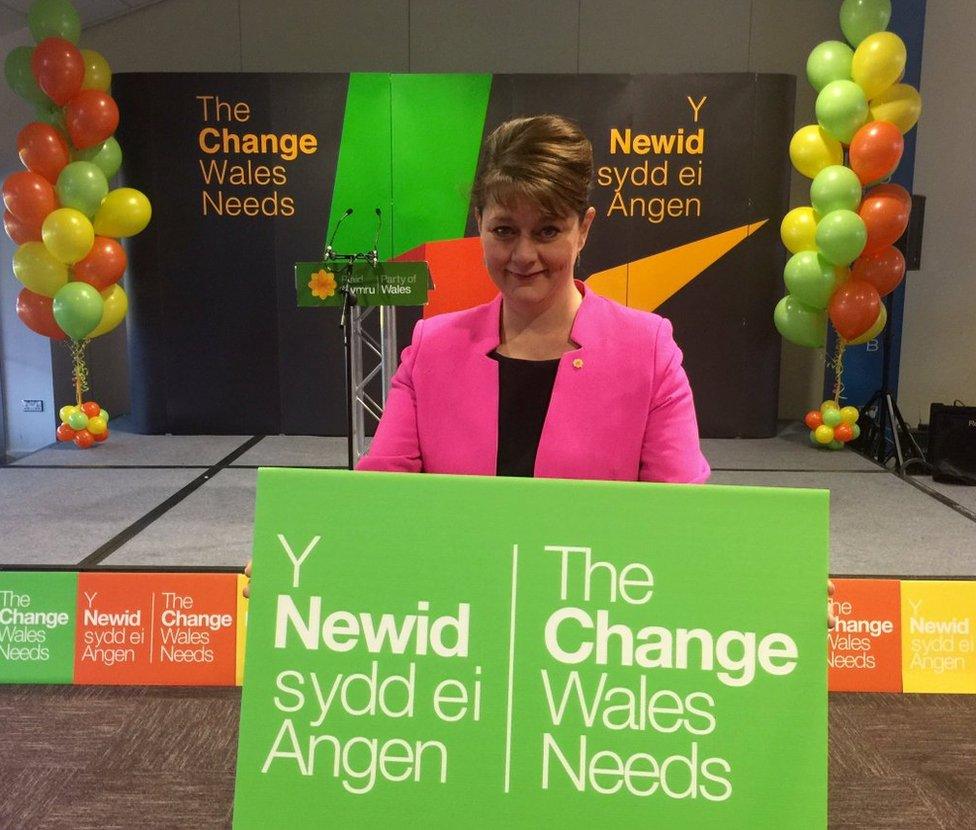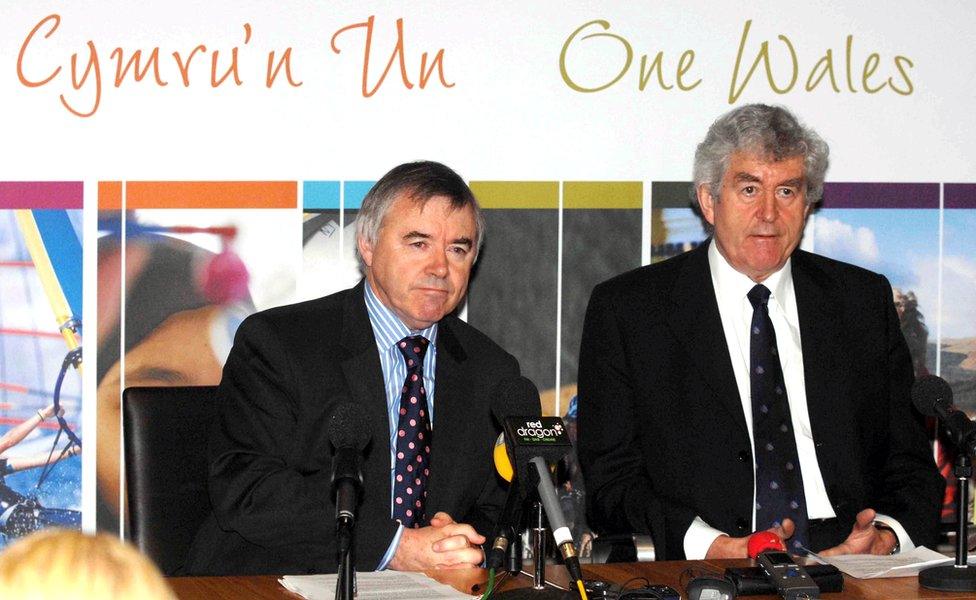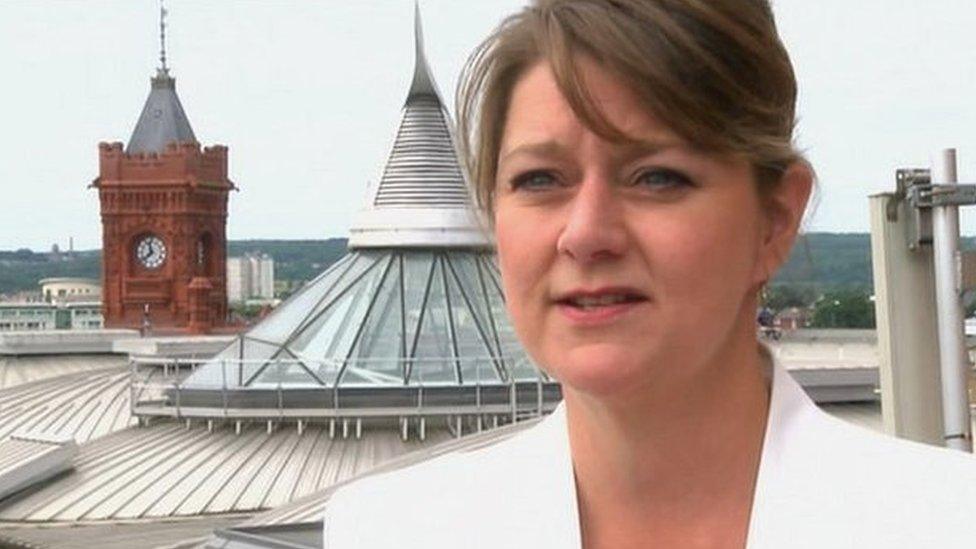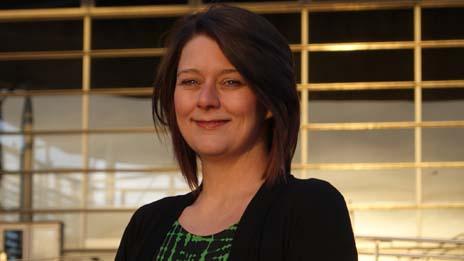Welsh Assembly election: Plaid Cymru's bid for power
- Published

Early start: Leanne Wood launches Plaid Cymru's election campaign in February
Plaid, Plaid Cymru, the Party of Wales. It has had several reincarnations reflecting a journey from a group of fervent Welsh-speaking radicals to a party which has shared the levers of power in Cardiff Bay.
Creating a National Assembly for Wales was a lifetime ambition for the majority of Plaid members and its inception marked an electoral zenith, external.
Under the leadership of Dafydd Wigley, Plaid won its highest share of the constituency vote in any Wales-wide election - 28.4%. Victories in the Labour heartlands of Islwyn and Rhondda contributed to 17 seats.
It proved to be an electoral high point. Events within and beyond the party's control affected Plaid's popularity. Amid rumours of a plot, Mr Wigley resigned, external and was replaced by Ieuan Wyn Jones. Meanwhile Labour's fortunes took an upward turn when Rhodri Morgan succeeded Alun Michael as first secretary, later taking the title first minister.
Electoral disappointment was to follow for Plaid. They lost Ieuan Wyn Jones' former Westminster seat of Ynys Mon to Labour at the 2001 general election and the party's representation in the assembly dropped from 17 to 12 following the 2003 Welsh election, with the seats gained in the 1999 election falling again to Labour.
Ieuan Wyn Jones resigned as Plaid leader, but was soon re-elected, external to power as leader of the party's assembly group.
At the 2005 general election, Plaid lost Ceredigion to the Liberal Democrats and were reduced to three seats, their fewest at Westminster since 1992.
Party in power
With support on the wane, Plaid undertook a significant re-branding exercise, external a year later, opting to use "Plaid" as the party's name, although "Plaid Cymru - the Party of Wales" would remain the official title.
The party's colours were changed to yellow from the traditional green and red, while the party logo was changed from the "triban" used since 1933 to a yellow Welsh poppy.
The third assembly saw an upturn in fortunes with Plaid increasing its numbers from 12 to 15 at the 2007 election, regaining Llanelli and the newly created constituency of Aberconwy.

Ieuan Wyn Jones and Rhodri Morgan agreed a coalition deal in 2007
Following weeks of negotiations involving all four parties, Plaid and Labour formed what became known as the "One Wales" government, external. Central to the agreement was a commitment to campaign for a 'Yes' vote in a referendum on full law-making powers for the assembly.
Ieuan Wyn Jones became deputy first minister as one of four Plaid ministers around the cabinet table with one deputy minister.
The 2011 assembly election saw Plaid lose three seats and its place in government, and was overtaken by the Tories as the second largest party.
It led to wide-ranging changes which included streamlining the leadership team. Mr Jones stood down as leader and left the assembly altogether two years later, forcing a by-election in Ynys Mon which Plaid won with an increased majority.
In March 2012 Plaid elected Leanne Wood as the new leader ahead of two other candidates, Elin Jones and Dafydd Elis-Thomas. The party's first female leader, she was also the first not-fluent in Welsh.
In local, European and general elections which followed Ms Wood's victory, Plaid has failed to make a breakthrough.
Leanne Wood has said Plaid could lead a minority Welsh Government after 5 May. For that to happen, the party will have to nearly double its number of assembly members.
- Published4 March 2016

- Published24 February 2016

- Published15 March 2012
